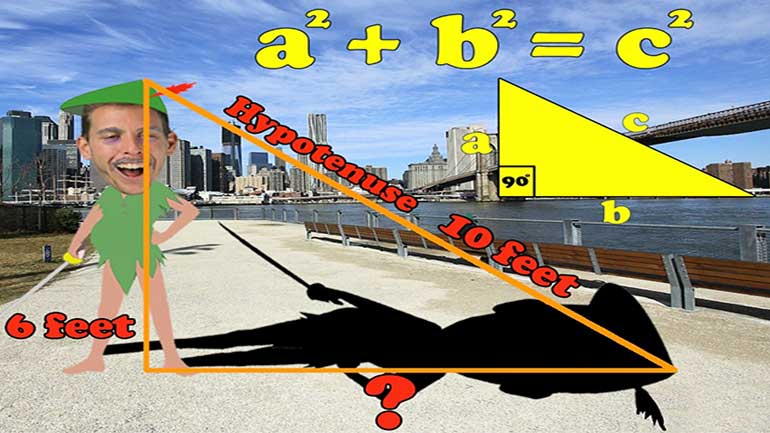Grade 8
Grade 8
Geometry 8.G.B.7
7. Apply the Pythagorean Theorem to determine unknown side lengths in right triangles in real-world and mathematical problems in two and three dimensions.
Once upon a long, long time ago, life was hard. There were no electronics. (Gasp!) No cell phones—not even those phones your grandparents remember with the rotary dials. There were no video games, no computers, no TV—not even radio. In fact, we're talking about a time before microwaves and even books. (Thanks for nothing, Gutenberg.)
So what did people do all day in this crazy time? Well, a bunch of the ones in Greece spent a lot of time talking about math, and they came up with a lot of the rules we now take for granted.
That's where Pythagoras comes in. This dude spent a good chunk of his time thinking about math and philosophy. He even came up with an important theorem for which he would be forever remembered: the Pythagorean Theorem. (Yes, he named it after himself. Wouldn't you if you came up with a theorem?)
It states, basically, that if a triangle is a right triangle, then the sum of the squares of the lengths of the legs equals the square of the length of the hypotenuse. Your students probably know it by its formula: a2 + b2 = c2.
It's about time your students get up close and personal with that formula, because they're going to use it—a lot. They should know not only when to apply the formula, but how to plug in numbers. They should also be able to interpret their answers in ways that make sense. (For example, although c2 = 25 means that c = ±5, a hypotenuse of length -5 doesn't make sense!)
If your students can find missing side lengths, apply the formula to real-life scenarios, and pick out the errors that these guys make, they should be in good shape.
Drills
Aligned Resources
- Word Problems (Distance) - Math Shack
- Rectangle: Find the Diagonal - Math Shack
- Area of Shaded Region - Math Shack
- Pythagorean Theorem - Math Shack
- Equilateral Triangle: Find the Area Given the Altitude - Math Shack
- 3-4-5 Triangle: Find the Remaining Side - Math Shack
- Square: Find the Diagonal - Math Shack
- Word Problems Involving the Pythagorean Theorem - Math Shack
- 3-4-5 Triangle: Find the Hypotenuse - Math Shack
- Equilateral Triangle: Find the Perimeter Given the Altitude - Math Shack
- Equilateral Triangle: Find the Area Given a Side Length - Math Shack
- 3-4-5 Triangle: Find the Area - Math Shack
